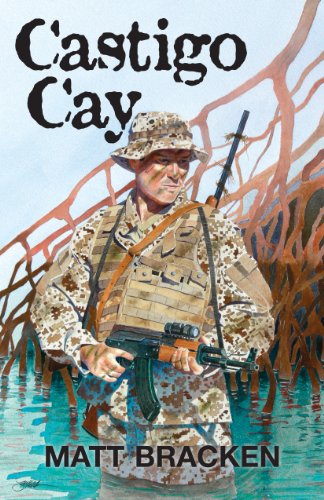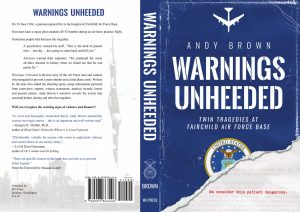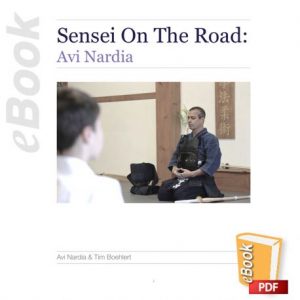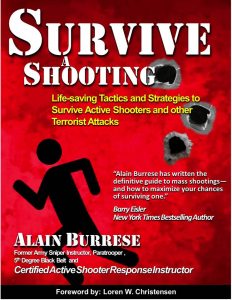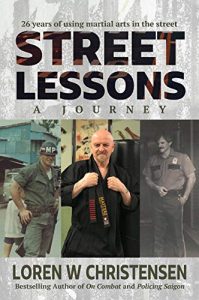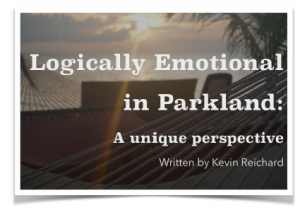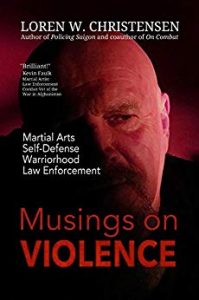When we discuss the many and varied aspects of violence dynamics, including preferences, techniques, styles and more, we should also keep a few key points in mind:
[01] Violence is different with every encounter. What worked once, may not work in a similar situation somewhere down the road, which effectively forces you to pick alternative responses, preferably before-hand, and no matter who you are or how good you give yourself credit for being. Don’t believe your own story, that’s the first thing that will get you in trouble.
[02] Limiting what you learn may be a great choice, but it could also cost you. For instance, if you choose to limit your exposure or your training for only specific types of encounters, you’ll come up empty when that doesn’t happen, but ‘this’ does.
Perhaps you should consider reading more about the differences between possible and probable events, and change your training, or modify it to the most likely (probable) scenarios primarily, but not to entirely discount the other possibilities?
[03] Violence in the form that most of us will encounter is going to be social-based, and not asocial violence. Thus, your goals may be merely to set social status, or to protect property, or maybe even to send a message/threat, implicit or otherwise that “it would not be wise to cross this line” or some such similar reasoning.
[04] Having a weapon on your person at the time of any encounter may determine to a judge/jury an outcome that you didn’t expect, foresee or plan for. Think of how others will see your actions – “You planned it.” Thus, a pre-mediation factor creeps in by the other sides legal team. And again, you need to understand your laws, because I can guarantee you that the arriving officials may not, and/or do not understand the laws concerning the UOF and threat of UOF when displaying/brandishing as an example a ‘pocket knife.’
I will give you an example of how and why my path differs from yours. In one of my jobs in a Security force function, we had to follow policies (those of the institution – the employer.) We were never allowed to strike, kick or throw anyone. Now if you’d already learned your ‘art’, a lot of your go-to options have effectively been taken off the table. What now? You’ll spend a lot of time un-learning everything you know about your MA or your combatives training.
We were also limited in our responses and options by local, state and federal laws. Have you got any familiarity with any of the typical laws regarding the use of force in your community? If you do, that’s a good start. Now, throw in dealing with a vulnerable population – the homeless, those with substance abuse issues, those with mental health diagnoses, those showing altered mental status (AMS) symptoms – which could include some of the above, but also consider the autistic, those with dementia and those with alzheimers disease.
Now, add these restraining factors:
[a] You are being watched and recorded in almost every interaction – by the institution, and many times by the public. And while the institution may back you up in your response, the public likely won’t. Why? because violence is ugly, no matter who you are. And the only way that you can even approach ‘getting it’ is by studying it, doing it and learning from it all, good and bad.
[b] You could be reprimanded, suspended, fired, sued or some combination of all of these possible ‘disciplinary’ actions. And then there may be the media exposure…
[c] There’s also a toll you pay – with every, single transaction. With some, you may feel confident beyond a doubt that your use of force (violence) was justified. but with many events, you’re going to question what you did, how you did it and more, if not now, based on how your work develops and the amount of support or lack of support that you receive along the journey. Unfortunately, you still need to make your own choices with almost every encounter. The toll may be feeling guilty, or bad, but another cost is in your future performance factors – will you step up the next time, will you throttle back your response stance for better or worse? Again, these are personal choices based on several factors – the law, the policy, your moral compass, the views of your peers, the views of the public or other employees that surround you.
[d] There are also environmental factors that need to be considered, maybe specifically in my model, but I’d say likely in yours as well. As a much used training example: after hitting another combatant, he goes down, and hits his head on a curb. He dies as a result of his injuries, and your actions. Your life as you knew it ended when he died.
Now of course there are times when you may have no worries, but I can’t think of a specific one at the moment. Even as an employee, whose job description cites protecting property and the public in/around your facility, and even if he’d pulled a knife on you, and you may have legal grounds to justify your actions, it’s not over – not by a long shot. Knowing your environment may convince you to re-think the options you choose to deploy in all or most of your actions. Sometimes that’s not possible, but you may have to plan that into your ‘threat response kit.’
Violence is an ugly option, but it’s also a necessary one when dealing with violent people. The only outcome should be in your favor, and in conjunction with all of the legal and moral lines that we all typically follow and/or are held to. There are more mental aspects to dealing effectively with violence than there are physical aspects perhaps, but years of study has shown me that, and your experiences may be different. One quote that I learned early on was: “to stop a violent act, you need to be better at violence than they are.” For me, that set the tone of every encounter. It started the ‘conversation’, helped set my mindset when ‘the dance sequence’ began, and added confidence at the beginning of every dance.
I dealt with hundreds of acts of violence over the years that I was active, and I can honestly state that I never had a plan other than to end it in my favor. I never used more than a few go-to techniques. I transitioned into control after the ‘attack’ with no abuse, no ego issues, and no threat of retaliation or to punish. It was never about punishment. When it was over, it was over – not personal, just a business transaction between two parties that didn’t view the transaction in the same terms you might say.
I can also state that I dealt with a varied population – MH patients, family members, friends and acquaintances, but also substance abusers, those at risk, child molesters, murderers, rapists, thieves, juveniles, men, women, transgender ad all of it’s associated labels and children. They all had one thing in common – they were all violent. The one takeaway for me is that it was a great learning time, with either willing or unwilling participants that all had one thing in common: they knew how to use violence. It mattered just a little about why, but you need to let that go too. Rather than to reject their reasoning, or to argue about it, you just need to embrace the fact that you may not change their minds, and when it’s time, it’s time. You need to pick the when, where and how. Everything else is open for discussion, but perhaps afterwards.
I’ve even had to address other Martial Artists. I had one technique that I used under those circumstances. It never got physical, despite their sometimes impressive attempts to convince me that I was not going to be able to stop them because of their knowledge, which was scary during more than one encounter. Any Martial Artist has this knowledge, and knows what my solution was. There was of course a backup plan, and that was just too easy – it makes me smile to think about it, because might isn’t always right. And that is a technique too.
Give choices – it MAY work… A lot of social violence is about saving face – learn that. Respect goes a long, long way, even when it’s not deserved or earned.
Learn to actively listen without feeling the need to respond – immediately at a minimum. Most of us listen half-heartedly while we are formulating a response. STOP doing that! Be conscious of it when you are doing it, and work at getting better at not doing it in the future.
Expand your vocabulary, expand your training potential, expand your capacity for discovering that you’ll never know it all, you’ll never be the best, or undefeated even. Embrace the possibilities, educate yourself, and share.
This knowledge, my knowledge, is specific, to and for me, because I know what worked for me. I wasn’t ever the best, but I was never the worst. I was effective, and had only a few close calls where it could have gone the other way, but the social aspect of the struggle was on the table and in play, to my advantage. I was maybe the most studied. I continue to learn, and expand my horizons and educate others based on my knowledge and experience, because it can make a difference for someone, somewhere – you’ll never know.
The book of knowledge is deep, and it needs to be shared.
